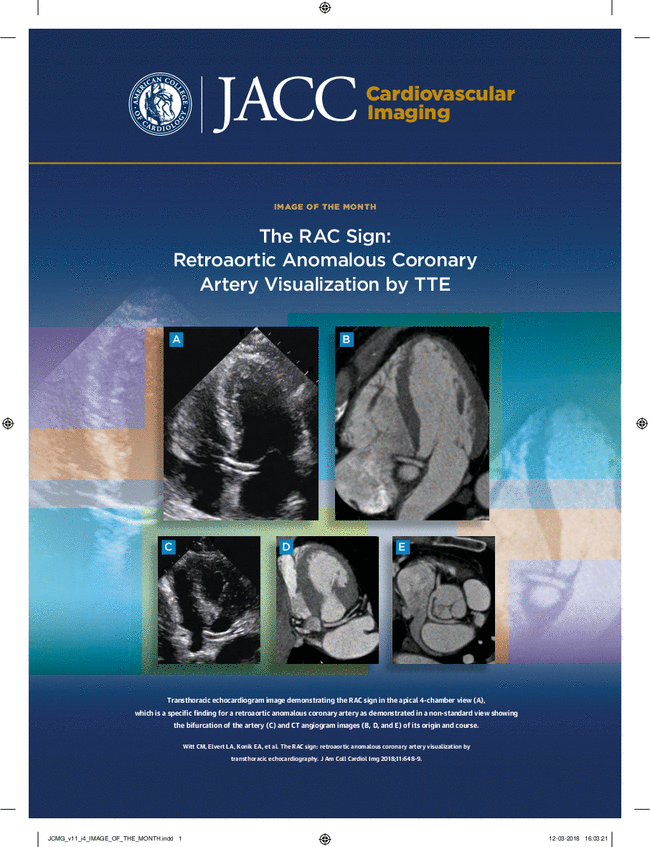Clinical Likelihood Prediction of Hemodynamically Obstructive Coronary Artery Disease in Patients With Stable Chest Pain
IF 12.8
1区 医学
Q1 CARDIAC & CARDIOVASCULAR SYSTEMS
引用次数: 0
Abstract
Background
Selection for invasive angiography is recommended to be based on pretest probabilities (PTPs), and physiological measures of hemodynamical impairment by, for example, fractional flow reserve (FFR) should guide revascularization. The risk factor–weighted clinical likelihood (RF-CL) and coronary artery calcium score–weighted clinical likelihood (CACS-CL) models show superior discrimination of patients with suspected obstructive coronary artery disease (CAD), but validation against hemodynamic impairment is warranted.
Objectives
The aim of this study was to validate the RF-CL and CACS-CL models against hemodynamically obstructive CAD.
Methods
Stable de novo chest pain patients (N = 4,371) underwent coronary computed tomography angiography and subsequently invasive coronary angiography with FFR measurements. Hemodynamically obstructive CAD was defined as invasive FFR ≤0.80 or high-grade stenosis by visual assessment (>90% diameter stenosis). For comparison, a guideline-endorsed basic PTP model was calculated based on age, sex, and symptom typicality. The RF-CL model additionally included the number of risk factors, and the CACS-CL model incorporated the coronary artery calcium score into the RF-CL.
Results
In total, 447 of 4,371 (10.9%) patients had hemodynamically obstructive CAD. Both the RF-CL and CACS-CL models classified more patients with a very low clinical likelihood (≤5%) of obstructive CAD compared to the basic PTP model (33.0% and 53.7% vs 12.0%; P < 0.001) with a preserved low prevalence of hemodynamically obstructive CAD (<5% for all models). Against hemodynamically obstructive CAD, calibration and discrimination of the RF-CL and CACS-CL models were superior to the basic PTP model.
Conclusions
The RF-CL and CACS-CL models are well calibrated and superior to a currently recommended basic PTP model to predict hemodynamically obstructive CAD. (Danish Study of Non-Invasive Diagnostic Testing in Coronary Artery Disease [Dan-NICAD]; NCT02264717; Danish Study of Non-Invasive Diagnostic Testing in Coronary Artery Disease 2 [Dan-NICAD 2]; NCT03481712, Danish Study of Non-Invasive Diagnostic Testing in Coronary Artery Disease 3 [Dan-NICAD 3]; NCT04707859)
稳定型胸痛患者血流动力学阻塞性冠状动脉疾病的临床可能性预测
背景:建议根据检查前概率(PTPs)选择是否进行有创血管造影术,并通过分数血流储备(FFR)等血流动力学损伤的生理指标来指导血管再通术。风险因素加权临床可能性(RF-CL)和冠状动脉钙化评分加权临床可能性(CACS-CL)模型对疑似阻塞性冠状动脉疾病(CAD)患者的辨别能力较强,但还需要针对血流动力学损伤进行验证:本研究旨在针对血流动力学阻塞性冠状动脉疾病验证 RF-CL 和 CACS-CL 模型:稳定的新发胸痛患者(N = 4,371)接受了冠状动脉计算机断层扫描血管造影术,随后接受了带有 FFR 测量的有创冠状动脉造影术。血流动力学阻塞性 CAD 的定义为有创 FFR ≤0.80 或目测评估为高度狭窄(直径狭窄 >90%)。为了进行比较,根据年龄、性别和症状典型性计算了指南认可的基本 PTP 模型。RF-CL 模型还包括风险因素的数量,而 CACS-CL 模型则将冠状动脉钙化评分纳入 RF-CL 中:在 4371 名患者中,共有 447 人(10.9%)患有血液动力学阻塞性 CAD。与基本 PTP 模型(33.0% 和 53.7% vs 12.0%;P < 0.001)相比,RF-CL 和 CACS-CL 模型都能将更多临床可能性极低(≤5%)的患者归类为阻塞性 CAD,而血流动力学阻塞性 CAD 的患病率则保持在较低水平(结论:RF-CL 和 CACS-CL 模型的临床可能性极低(≤5%),而血流动力学阻塞性 CAD 的患病率则保持在较低水平):RF-CL 和 CACS-CL 模型校准良好,在预测血流动力学阻塞性 CAD 方面优于目前推荐的基本 PTP 模型。(丹麦冠状动脉疾病无创诊断检测研究[Dan-NICAD];NCT02264717;丹麦冠状动脉疾病无创诊断检测研究 2 [Dan-NICAD 2];NCT03481712,丹麦冠状动脉疾病无创诊断检测研究 3 [Dan-NICAD 3];NCT04707859)。
本文章由计算机程序翻译,如有差异,请以英文原文为准。
求助全文
约1分钟内获得全文
求助全文
来源期刊

JACC. Cardiovascular imaging
CARDIAC & CARDIOVASCULAR SYSTEMS-RADIOLOGY, NUCLEAR MEDICINE & MEDICAL IMAGING
CiteScore
24.90
自引率
5.70%
发文量
330
审稿时长
4-8 weeks
期刊介绍:
JACC: Cardiovascular Imaging, part of the prestigious Journal of the American College of Cardiology (JACC) family, offers readers a comprehensive perspective on all aspects of cardiovascular imaging. This specialist journal covers original clinical research on both non-invasive and invasive imaging techniques, including echocardiography, CT, CMR, nuclear, optical imaging, and cine-angiography.
JACC. Cardiovascular imaging highlights advances in basic science and molecular imaging that are expected to significantly impact clinical practice in the next decade. This influence encompasses improvements in diagnostic performance, enhanced understanding of the pathogenetic basis of diseases, and advancements in therapy.
In addition to cutting-edge research,the content of JACC: Cardiovascular Imaging emphasizes practical aspects for the practicing cardiologist, including advocacy and practice management.The journal also features state-of-the-art reviews, ensuring a well-rounded and insightful resource for professionals in the field of cardiovascular imaging.
 求助内容:
求助内容: 应助结果提醒方式:
应助结果提醒方式:


